Comments / Questions (68)
![]() Maja Astrup Hansen wrote:
Maja Astrup Hansen wrote:
Når jeg når til 3. omgang på selve trøjen = 2. omgang med raglan udtagninger og linje 3 i A1 har jeg for mange masker i forstykket mellem A1 og omslaget og markøren. er der fejl i opskriften??
17.03.2023 - 14:58DROPS Design answered:
Hei Maja. Har ingen tilbakemeldinger på at det er noe feil, men for å dobbeltsjekke er det fint om du opplyser hvilken str du strikker, og om hvor mange masker du har. Du kan også telle maskene etter hver økeomgangen, slik at du er sikker på om du har økt det antall masker du skal. mvh DROPS Design
20.03.2023 - 11:53
![]() Michelle wrote:
Michelle wrote:
Peut on tricoter ce joli pull avec des aiguilles droites? Je ne suis pas à l'aise avec des aiguilles circulaires.Merci de me répondre. Bien créativement
14.02.2023 - 15:40DROPS Design answered:
Bonjour Michelle, probablement, mais vous devrez alors faire les ajustements nécessaires - cette leçon pourra vous y aider. Bon tricot!
14.02.2023 - 17:59
![]() Michelle wrote:
Michelle wrote:
Bonjour,j'aime beaucoup ce modele mais je ne suis pas à l'aise avec les aigulles circulaires,serait ilpossible de le tricoter avc les aigulles droites. Merci de me répondre et merci pour ce partage. Bien créativement
12.02.2023 - 17:56DROPS Design answered:
Bonjour Michelle, cette leçon devrait pouvoir vous aider à adapter ce modèle sur aiguilles droites; il est toutefois parfois plus simple, en fonction des modèles, de tricoter en rond, n'hésitez pas à essayer, à l'aide de nos vidéos, nombreuses sont celles qui ont finalement adopté les aiguilles circulaires après les avoir essayées. Bon tricot!
13.02.2023 - 10:19
![]() Andi Pacecca wrote:
Andi Pacecca wrote:
Sleeve decrease question. The decrease tip says to purl 3tog once at the underarm marker. This only decreases 2 stitches. The instructions say that after 7 times of decreasing there will be 31 stitches decreased. If each time only decreases 2 stitches I would have decreased only 14 stitches. Am I to do the decrease tip twice at the under arm, decreasing 4 stitches each time? But that is still only 28 stitches decreased? Thank you for the help!
04.02.2023 - 03:46DROPS Design answered:
Dear Mrs Pacecca, mid under sleeve you will decrease 2 stitches on every decrease round (by purling 3 sts together) - and work these decrease round a total of 7 times on every 4 cm ; there were 41 sts - (2 sts decresed a total of 7 times) = 31 sts remain. Happy knitting!
06.02.2023 - 09:19
![]() Elena Zampi wrote:
Elena Zampi wrote:
Buonasera, Vorrei sapere se è possibile lavorare il motivo centrale e le maniche con della lana di un altro colore
17.11.2022 - 17:00DROPS Design answered:
Buonasera Elena, può apportare al modello le modifiche che preferisce. Buon lavoro!
19.11.2022 - 22:09
![]() Elisa wrote:
Elisa wrote:
Segnalo un errore nella traduzione italiana relativamente alla spiegazione del punto grana di riso. È scritto così: GRANA DI RISO: GIRO 1: * 1 giro diritto, 1 giro rovescio *, lavorare *-*. Mentre dovrebbe essere *1 maglia a diritto, 1 maglia a rovescio*
14.10.2022 - 19:07DROPS Design answered:
Buongiorno Elisa, grazie per la segnalazione: abbiamo corretto il testo. Buon lavoro!
15.10.2022 - 12:26
![]() Lynnygirl wrote:
Lynnygirl wrote:
Instead of writing "make 1 yarn over" at the start of the yoke, just write "yarn over". It makes it sound like you want a make 1 AND THEN a yarn over. A bit confusing at first.
16.09.2022 - 19:13
![]() Sandra Faucett wrote:
Sandra Faucett wrote:
Hi, I'm a little confused on the sleeves. On the rows that are not increased, do you start the moss pattern on the yarn over stitch?
26.05.2022 - 16:09DROPS Design answered:
Dear Sandra, yes, the raglan line has 2 stitches, the rest of the sleeve stitches are worked in moss stitch. Happy knitting!
26.05.2022 - 23:00
![]() Rose wrote:
Rose wrote:
I have ripped the sweater twice now. I am having a problem with A1 and A2. I always seem to be short 1 stitch. I have the correct amount of stitches on my needle but the pattern does not work. Please advise if a correction has been made. Thank you
24.05.2022 - 16:00DROPS Design answered:
Dear Rose, you first work A.1 over 17 sts, and on the first row in A.1 you will increase 4 sts = there are now 21 sts in A.1. On 3rd row work: P2, K5 sts together, (yO, K1)x7, K1, K5 twisted together, P2 (=2+1+14+1+1+2= 21 sts). When A.1 is done, work now A.2 over these 21 stitches, on 3rd row work as on 3rd row in A.1. When A.2 is done in height, repeat A.2 from 1st round. Hope it will help, happy knitting!
24.05.2022 - 16:51
![]() Nola Heyns wrote:
Nola Heyns wrote:
I need specific help with the diagram - A.1. You knit it as part of the Raglan increase rounds (14). There are six rows - once you have knitted it once, do you knit just the 21 stitch rows and not the 17 stitch row until it measures to size?
19.03.2022 - 08:44DROPS Design answered:
Dear Mrs Heyns, after you have worked the 6 rows in A.1, continue working A.2 over A.1 and you will now repeat the 6 rows in A.2 (ie the increases on the first row in A.1 occurs just one time when working A.1). Happy knitting!
21.03.2022 - 08:07
Clover#cloversweater |
|||||||||||||||||||
 |
 |
||||||||||||||||||
Knitted jumper for children in DROPS Air or DROPS Paris. The piece is worked top down with lace pattern and raglan. Sizes 2-12 years.
DROPS Children 34-4 |
|||||||||||||||||||
|
EXPLANATIONS FOR THE PATTERN: ------------------------------------------------------- PATTERN: See diagrams A.1 and A.2. The diagrams show all the rows in the pattern seen from the right side. INCREASE/DECREASE TIP (evenly spaced): To work out how to increase/decrease evenly, count the total number of stitches on the needle (e.g. 54 stitches) and divide by the number of increases/decreases to be made (e.g. 6) = 9. In this example, increase by making 1 yarn over after each 9th stitch. On the next round work the yarn overs twisted to avoid holes. When decreasing, knit together each 8th and 9th stitch (in this example). MOSS STITCH: ROUND 1: * Knit 1, Purl 1 *, work from *-*. ROUND 2: Knit over purl and purl over knit. Repeat round 2 onwards. RAGLAN: Increase 1 stitch on each side of the 2 knitted stitches in each transition between body and sleeves (= 8 stitches increased on the round). Increase 1 stitch by making 1 yarn over. On the next round work the yarn overs twisted to avoid holes. Then work the new stitches in moss stitch on the sleeves and stocking stitch on the front and back pieces. DECREASE TIP (for sleeves): Decrease 1 stitch on each side of the marker thread as follows: Work until there is 1 stitch left before the marker thread, purl 3 together. In this way, 3 stitches become 1 stitch; then move the marker thread to the stitch before this stitch. ------------------------------------------------------- START THE PIECE HERE: ------------------------------------------------------- JUMPER - SHORT OVERVIEW OF THE PIECE: The piece is worked in the round with circular needle, top down. After the yoke the body is continued in the round with circular needle. The sleeves are worked in the round with short circular needle/double pointed needles. YOKE Cast on 54-54-58-62-64-68 stitches with circular needle size 4.5 mm and Air or Paris. Knit 1 round. Then work rib in the round (= knit 1 / purl 1) for 3 cm. Knit 1 round where you increase 6-6-6-6-8-16 stitches evenly – read INCREASE/DECREASE TIP = 60-60-64-68-72-84 stitches. Change to circular needle size 5.5 mm. Insert 1 marker here - THE PIECE IS NOW MEASURED FROM HERE! Now insert 4 marker threads (without working the stitches) as follows: Insert 1 marker thread at the beginning of the round (= in transition between sleeve and back piece), 1 marker thread after 21-21-23-25-25-31 stitches (= back piece), 1 marker thread after 9-9-9-9-11-11 more stitches (= sleeve), 1 marker thread after 21-21-23-25-25-31 more stitches (= front piece). There are 9-9-9-9-11-11 stitches left to the first marker thread (= sleeve). The next round is worked as follows: The round starts at the first marker thread, in the transition between sleeve and back piece. Knit 1, make 1 yarn over, work 19-19-21-23-23-29 stitches in stocking stitch (= back piece), 1 yarn over, knit 2 (marker thread sits in the middle of these 2 stitches), 1 yarn over, work 7-7-7-7-9-9 stitches in MOSS STITCH – see description above (= sleeve), 1 yarn over, knit 2 (marker thread sits in the middle of these 2 stitches), 1 yarn over, work 1-1-2-3-3-6 stitches in stocking stitch, work A.1 (= 17 stitches = front piece), 1-1-2-3-3-6 stitches in stocking stitch, 1 yarn over, knit 2 (marker thread sits in the middle of these 2 stitches), 1 yarn over, work 7-7-7-7-9-9 stitches in moss stitch (= sleeve), 1 yarn over and knit 1. REMEMBER THE KNITTING TENSION! The first increase to RAGLAN – read description above, is now finished (= 8 stitches increased on the round). Continue with this pattern and increase to raglan every 2nd round a total of 13-14-15-16-17-17 times (including the first increase described above). NOTE: When A.1 has been completed in height, work A.2 (= 21 stitches) over A.1. Repeat A.2 in height to finished length. After the last increase to raglan there are 168-176-188-200-212-224 stitches on the needle. Continue with pattern as before, but without increasing, until the piece measures 13-14-15-16-17-18 cm from the marker at the beginning of the yoke. The next round is worked in pattern and stocking stitch as before, but start the round 1 stitch earlier (before the 2 stitches in stocking stitch between sleeve and back piece). Work stocking stitch over 49-51-55-59-61-67 stitches (= back piece), place the next 33-35-37-39-43-43 stitches on a thread (= sleeve), cast on 4-4-4-6-6-6 new stitches on the needle (= in side under sleeve), continue with stocking stitch and pattern over the next 53-55-59-63-65-71 stitches (= front piece), place the next 33-35-37-39-43-43 stitches on a thread (= the other sleeve), cast on 4-4-4-6-6-6 new stitches on the needle (= in side under sleeve). Body and sleeves are finished separately. THE PIECE IS NOW MEASURED FROM HERE! BODY: There are now 110-114-122-134-138-150 stitches on the needle. Continue with stocking stitch and pattern A.2 in the round as before. When the piece measures 16-19-22-25-28-31 cm from the division knit 1 round where you increase 10-12-14-16-18-20 stitches evenly on round = 120-126-136-150-156-170 stitches. Change to circular needle size 4.5 mm and work rib (= knit 1 / purl 1) for 4 cm. Loosely cast off with knit over knit and purl over purl – to avoid the cast-off edge being tight, you can cast off with a needle size 5.5 mm. Cut and fasten the strand. SLEEVE: Place the stitches from the thread on one side of the piece onto short circular needle/double pointed needle size 5.5 mm (= 33-35-37-39-43-43 stitches). Knit up 1 stitch in each of the 4-4-4-6-6-6 stitches cast on under the sleeve = 37-39-41-45-49-49 stitches. Insert 1 marker thread in the middle of these 4-4-4-6-6-6 stitches and start the round here. Work moss stitch. When the piece measures 2 cm from the division decrease 2 stitches mid under sleeve – read DECREASE TIP. Decrease like this every 2½-3-3½-4-4½-5½ cm a total of 6-6-7-7-7-7 times = 25-27-27-31-35-35 stitches. Continue working until the sleeve measures 18-22-26-30-34-38 cm from the division. Knit 1 round where you increase 3-3-3-3-3-3 stitches in all sizes = 28-30-30-34-38-38 stitches. Change to double pointed needles size 4.5 mm and work rib (knit 1 / purl 1) for 4 cm. Loosely cast off with knit over knit and purl over purl – to avoid the cast-off edge being tight, you can cast off with a needle size 5.5 mm. Cut and fasten the strand. Work the other sleeve in the same way. |
|||||||||||||||||||
Diagram explanations |
|||||||||||||||||||
|
|||||||||||||||||||
 |
|||||||||||||||||||
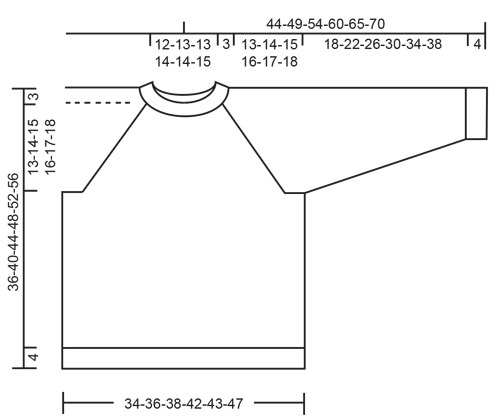 |
|||||||||||||||||||
Have you finished this pattern?Tag your pictures with #dropspattern #cloversweater or submit them to the #dropsfan gallery. Do you need help with this pattern?You'll find 24 tutorial videos, a Comments/Questions area and more by visiting the pattern on garnstudio.com. © 1982-2025 DROPS Design A/S. We reserve all rights. This document, including all its sub-sections, has copyrights. Read more about what you can do with our patterns at the bottom of each pattern on our site. |
|||||||||||||||||||







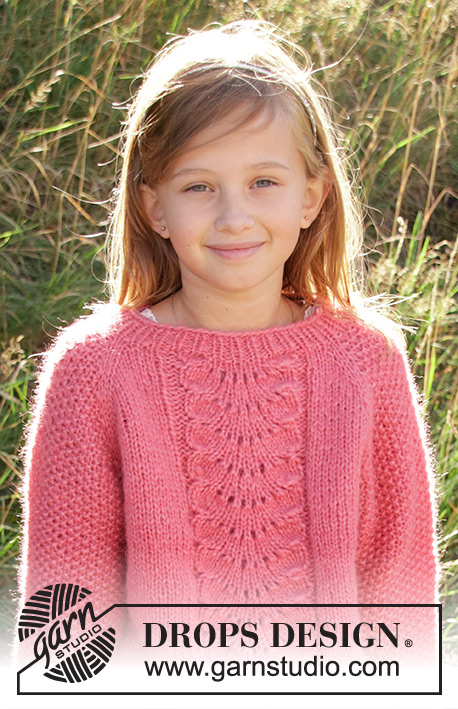
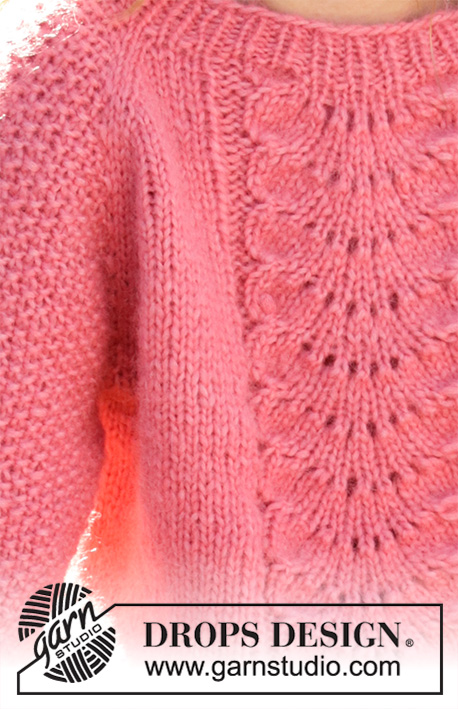


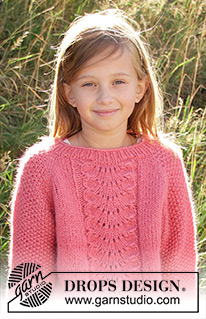
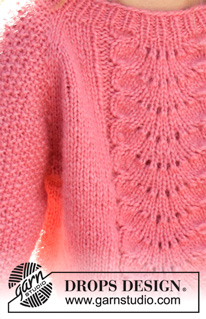





















































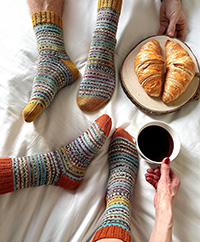
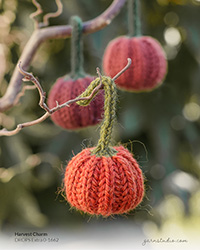
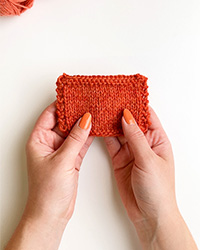
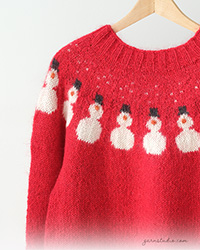

Post a comment to pattern DROPS Children 34-4
We would love to hear what you have to say about this pattern!
If you want to leave a question, please make sure you select the correct category in the form below, to speed up the answering process. Required fields are marked *.